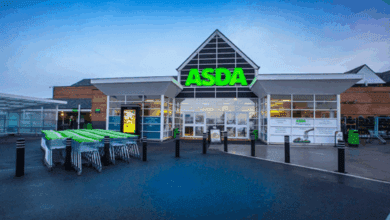How cashierless technology can impact loyalty for retailers

Register to get 1 free article
Reveal the article below by registering for our email newsletter.
Want unlimited access? View Plans
Already have an account? Sign in
“We’re just getting started here”, said Cameron James, VP of Amazon’s physical retail division. “I think what we’re trying to do here — and with all of our physical stores — is really work backwards from the customer and deliver some differentiation.”
James was speaking at the opening of Amazon’s first Amazon Go store, nestled in the Capitol Hill neighbourhood of Seattle, where the tech giant unveiled to the world the first fully functioning cashier-less grocery store.
As a concept, the cashier-less store is immaculate. Shoppers can walk into the store, grab whatever goods they like, and leave. All that is needed is the correct underlying technology and applications. The ultimate frictionless experience.
Cashier-less supermarkets are soon to be much more than an experiment in Amazon’s back-yard. Amazon has plans to open over 3,000 of its own cashier-less stores by 2021 – but even more significantly – it plans to sell it’s automated “Just Walk Out” technology on to third-party retailers. With the likes of Sainsbury’s trialling this concept unsuccessfully last year, it is evident that more stores will be rolling out this cashier-less technology in the near future. And with the current Covid-19 pandemic – we could see this roll out accelerated as social distancing is encouraged and stores look to future proof themselves against these stringent measures.
But though this technology may seem timely – and offer convenience to shoppers – retailers need to be fully aware of the implications of embracing cashier-less technology. Particularly when it comes to developing and maintaining brand loyalty.
Analyst firm Forrester found that 85% of consumers buy from companies they have a strong emotional bond with – and that this connection means they are likely to spend more than those with no connection.
Brands clearly benefit from having an emotional connection with consumers. But it shouldn’t be forgotten that people connect with people, before they connect with brands. The emotional connection between a grocer and its customers is often driven by the people who work there. Local supermarkets build loyalty because shoppers know and trust the people behind the tills – with these interactions driving positive associations with the brand at large. This factor is particularly pertinent at the moment in time as communities rally together and support each other, with supermarket workers on the front line of the pandemic, ensuring people still have access to the food they need whilst isolation.
It’s also important to understand where these social interactions are the most crucial. Older generations, an essential segment for any grocer, typically have the most disposable income, and are expected to be the biggest spenders by 2030 globally. However, they are the most unlikely to trust cashier-less stores. We already know that elderly consumers can be uncomfortable with online banking services, with concerns around security and adopting technology.
These consumers still largely prefer to use physical cash when purchasing, which helps them feel more secure with their transactions. This is also a group that has been on lockdown for an extended period of time, so will be craving social interaction even more than before. Cashier-less stores much more closely serve the needs and behaviours of younger consumers – but by doing so grocers would risk alienating the hugely valuable older audience.
Retailers looking to adopt this technology should also be aware of the obvious risks around an increase in theft and shoplifting. Following the introduction of self-checkout tills at supermarkets, consumer research showed that almost 20% of people anonymously surveyed admitted to having stolen at a self-checkout. It is easy to imagine this increasing with cashier-less stores – especially when there is no ‘face’ for who they are robbing. Brands not represented by humans mean people feel less loyalty – and also less guilt.
Cameron James was right to say that grocers need to “work backwards from the customer”. For many consumers, cashier-less shopping removes friction and adds convenience. However with every day practice turned on its head, it is important that grocers work backwards in a way that works for all their customers – understanding that some audiences can be isolated by new technology – and that this can end up costing in the long run.
By Gemma Davies, Research Director at 2CV Research







